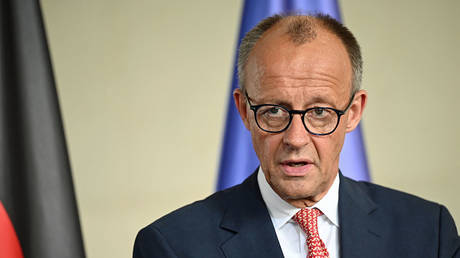What Does a Leadership Development Program Curriculum Include?

A Leadership Development Program curriculum typically includes several key components crafted to improve your leadership capabilities. You’ll find a focus on core competencies such as self-awareness and communication, alongside fundamental compliance training. The curriculum often features both live sessions and self-paced modules, integrating real-world scenarios for experiential learning. Furthermore, it emphasizes practical skills development and mentorship opportunities. Comprehending these elements can help you grasp how leadership training can be customized to fit your needs and challenges.
Key Takeaways

- Core competencies such as self-awareness, communication, and emotional intelligence are foundational to effective leadership development.
- The curriculum includes compliance training to ensure understanding of legal obligations and ethical conduct.
- Practical skills development focuses on communication, decision-making, and conflict management through real-world scenarios.
- Mentorship opportunities provide personalized guidance and accelerate growth for participants.
- Continuous feedback integration ensures the curriculum remains relevant and adapts to evolving leadership challenges.
Key Components of a Leadership Development Curriculum

When developing a leadership curriculum, it’s vital to include key components that encourage effective leadership skills. Your leadership development program curriculum should focus on core competencies like self-awareness, communication, influence, and learning agility.
Incorporating compliance training is likewise important, as it covers legal obligations and ethical conduct, ensuring participants understand workplace safety and data protection regulations.
To engage various learning preferences, use diverse formats such as live sessions, on-demand videos, and self-paced modules. Real-world scenarios and experiential learning opportunities should be integral, allowing you to apply leadership skills in practical contexts.
Finally, regularly updating the curriculum is necessary to reflect current leadership trends, keeping the program relevant and effective in developing future leaders.
Essential Leadership Theories and Frameworks

Comprehending fundamental leadership theories and frameworks is crucial for anyone looking to improve their leadership capabilities. These theories provide a foundation for effective leadership practices. Here’s a quick overview of important theories:
| Leadership Theory | Key Focus |
|---|---|
| Transformational Leadership | Inspiring and motivating followers |
| Situational Leadership | Adapting style based on team maturity |
| Servant Leadership | Prioritizing team members’ growth and well-being |
| Five Practices of Exemplary Leadership | Key behaviors for effective leadership |
| Emotional Intelligence | Managing emotions for better relationships |
Practical Skills Development

Building on the comprehension of leadership theories, practical skills development is a key component of any effective leadership program. This aspect focuses on fundamental competencies you’ll need to thrive as a leader.
Consider these key areas:
- Communication: Master how to convey ideas clearly and effectively.
- Decision-making: Learn techniques for making informed choices under pressure.
- Conflict management: Develop strategies to resolve disputes and maintain team harmony.
Programs often use real-world scenarios and case studies, allowing you to apply your skills in practical situations.
Furthermore, mentorship opportunities provide personalized guidance, helping you refine your abilities. Regular evaluation and feedback help you track your progress and identify areas for improvement.
This all-encompassing approach guarantees you’re well-equipped for the challenges of leadership.
Emotional Intelligence in Leadership

Emotional intelligence (EI) plays a crucial role in effective leadership, as it directly influences how you interact with your team and manage workplace dynamics. Leaders with high EI can improve team performance and boost employee engagement by up to 20%.
To cultivate your EI, focus on the four key components: self-awareness, self-regulation, social awareness, and relationship management. Developing these skills helps you navigate complex interpersonal situations and build a positive organizational culture.
Research shows that leaders with strong EI are 61% more likely to achieve superior performance and are seen as more approachable. Prioritizing EI in leadership development can also enhance decision-making, conflict resolution, and team motivation, ultimately leading to higher employee retention rates and satisfaction.
Mentorship Opportunities and Their Importance

Mentorship opportunities play an essential role in your leadership development path by helping you build valuable relationships with experienced professionals.
These connections not merely improve your skill development but additionally provide you with personalized guidance that accelerates your growth.
Building Relationships Through Mentorship
When you engage in a leadership development program, taking advantage of mentorship opportunities can greatly elevate your learning experience.
Mentorship provides personalized guidance that enriches your training and nurtures deeper connections.
Here are some key benefits of mentorship:
- Improved employee engagement, reducing turnover by 87%.
- Increased career advancement, with mentees promoted five times more often than non-mentees.
- A culture of continuous learning through shared personal experiences.
Enhancing Skill Development Opportunities
Effective skill development opportunities are vital for aspiring leaders, particularly when they involve personalized guidance that addresses individual needs.
Mentorship is a key component of leadership development programs, offering one-on-one support from experienced leaders to help you close skill gaps and improve your capabilities. Organizations that implement mentorship often see higher employee engagement and retention rates, as it promotes a sense of belonging and investment in personal growth.
Utilizing structured frameworks, like Together Software, guarantees consistent connections between mentors and mentees, promoting accountability. Research shows that 70% of mentees report improved job performance and increased self-confidence.
Real-World Case Studies and Experiential Learning

In leadership development programs, real-world case studies offer you practical examples that highlight successful strategies and common challenges organizations face.
These immersive learning opportunities, like simulations and role-playing, let you engage in your leadership skills in a safe environment, enhancing your confidence and readiness for real-life situations.
Practical Application Examples
Incorporating real-world case studies and experiential learning into leadership development programs greatly improves the effectiveness of the curriculum.
These methods not merely improve critical thinking but likewise allow you to practice skills in a safe environment.
Here are some practical application examples to reflect on:
- Analyze actual business challenges through case studies, cultivating discussion and critical analysis.
- Engage in simulations and role-playing exercises to receive immediate feedback from peers and facilitators.
- Partner with local organizations for live project experiences, bridging classroom theory with real-world application.
Immersive Learning Opportunities
Engaging in immersive learning opportunities can greatly improve your leadership development experience. Programs that include real-world case studies allow you to analyze and solve complex challenges faced by organizations, enhancing your critical thinking and decision-making skills.
Experiential learning methods, such as simulations and role-playing exercises, give you hands-on experience in a safe environment, where you can practice leadership skills and receive immediate feedback. Collaborating on team-based projects during this process boosts your communication skills, crucial for leading diverse teams effectively.
Studies show that active participation in these immersive experiences can improve knowledge retention by up to 75%. By applying theoretical concepts to practical situations, you’ll gain a deeper comprehension of leadership dynamics that can benefit your career.
Assessment Tools for Tailored Development

Although many organizations recognize the importance of leadership competency assessments, not all fully utilize them for personalized development. To create customized plans, it’s crucial to identify skill gaps and areas for improvement.
Here are some key points to take into account:
- Customize assessments to align with your institution’s specific context and strategic goals.
- Use qualitative data from assessments to benchmark and evaluate leadership program effectiveness over time.
- Engage external providers for customized assessments, ensuring relevance to unique leadership challenges.
Regular feedback from these assessments allows you to adjust your leadership development curriculum continuously.
Addressing Specific Leadership Challenges

Addressing specific leadership challenges requires a customized approach that recognizes the unique needs of different leadership roles.
Your leadership development program should begin with assessments to identify skill gaps at individual, team, and organizational levels, allowing for targeted training.
Include modules focused on soft skills training, as these are essential for effective team management.
Tailor content for first-time managers and experienced executives to guarantee relevance and engagement.
Shift from one-time experiences to continuous learning expeditions, combining real-world applications with classroom experiences.
Moreover, consider forming strategic partnerships with local institutions to improve your curriculum, addressing specific skill gaps within communities and industries.
This collaborative effort promotes impactful change and better prepares leaders for evolving demands.
Integrating Feedback and Continuous Improvement
To guarantee your leadership development program remains effective and relevant, it’s essential to integrate feedback and prioritize continuous improvement. Regularly collecting input from participants helps you refine your curriculum.
Consider these key strategies:
- Use end-of-session satisfaction surveys to gauge immediate reactions.
- Analyze engagement data, like participation rates, to identify strengths and weaknesses.
- Implement real-time reporting on behaviors to adjust content quickly.
Incorporating feedback from senior leaders creates a safe environment for learning, encouraging participants to apply their skills.
Conclusion

In conclusion, a well-rounded leadership development program curriculum encompasses various fundamental components, including core competencies, practical skills, and mentorship opportunities. By focusing on emotional intelligence and real-world applications, you can improve your leadership effectiveness. Utilizing assessment tools guarantees customized development, as integrating feedback promotes continuous improvement. This structured approach prepares you to face specific leadership challenges, nurturing growth and adaptability in your leadership path. Prioritize these elements to build a robust foundation for your future as a leader.
Image Via Envato
This article, "What Does a Leadership Development Program Curriculum Include?" was first published on Small Business Trends
What's Your Reaction?
 Like
0
Like
0
 Dislike
0
Dislike
0
 Love
0
Love
0
 Funny
0
Funny
0
 Angry
0
Angry
0
 Sad
0
Sad
0
 Wow
0
Wow
0





























































































